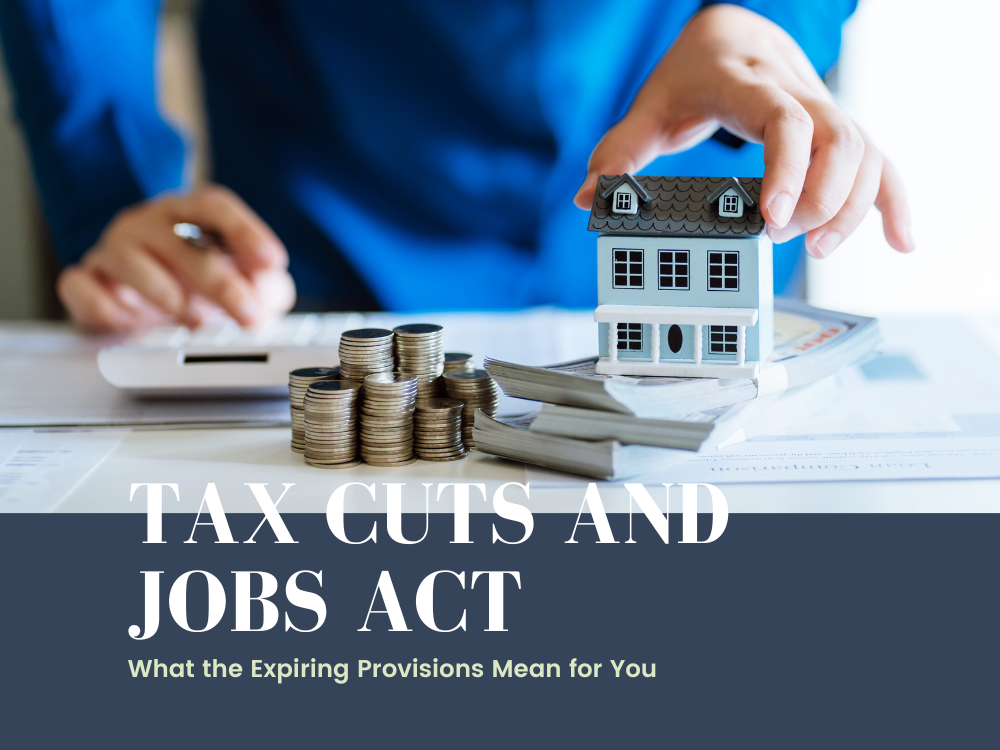The Countdown to Change: What the Expiring Provisions Mean for You

As the Tax Cuts and Jobs Act (TCJA) of 2017 approaches its sunset phase, many taxpayers, businesses, and financial experts are bracing for significant changes. The TCJA, a sweeping tax reform bill signed into law by President Donald Trump, introduced numerous changes to the tax code, most of which were designed to be temporary. As these provisions near their expiration dates, it’s essential to understand what this could mean for individuals, businesses, and the broader economy.
1. Individual Tax Rates: A Potential Increase
One of the most notable changes under the TCJA was the reduction of individual income tax rates across the board. The law introduced seven tax brackets, with rates ranging from 10% to 37%, down from the previous maximum rate of 39.6%. These lower rates have provided tax relief to many Americans, but they are set to expire at the end of 2025.
If Congress does not act to extend these provisions, tax rates will revert to pre-TCJA levels, effectively increasing taxes for millions of taxpayers. This could result in a higher tax burden for individuals across all income levels, but particularly for those in the higher brackets. For those planning their finances for the coming years, understanding this potential increase is crucial.
2. Standard Deduction and Personal Exemptions: Shifting Deductions
The TCJA nearly doubled the standard deduction, making it more attractive for many taxpayers to forgo itemizing deductions. This change simplified tax filing for millions and contributed to a decline in the number of taxpayers itemizing deductions. However, this provision is also set to expire at the end of 2025.
Simultaneously, the TCJA suspended personal exemptions, which previously allowed taxpayers to reduce their taxable income by a fixed amount for each dependent. If these provisions expire, the standard deduction will decrease, and personal exemptions could return, potentially complicating tax calculations for many households.
3. Child Tax Credit: Reverting to Lower Levels
The TCJA significantly increased the Child Tax Credit (CTC), doubling it from $1,000 to $2,000 per qualifying child, with up to $1,400 being refundable. This change provided substantial relief to families, particularly those with lower incomes. However, this enhanced credit is set to revert to its pre-TCJA level at the end of 2025, reducing the credit back to $1,000 per child.
For families that have come to rely on the expanded CTC, this reduction could result in a higher tax liability, particularly for those with multiple children. As this expiration approaches, it may be wise for affected families to plan for this potential decrease in their tax benefits.
4. State and Local Tax (SALT) Deduction Cap: A Contentious Issue
One of the most controversial aspects of the TCJA was the introduction of a $10,000 cap on the deduction for state and local taxes (SALT). This cap disproportionately affected taxpayers in high-tax states, leading to significant pushback from residents and lawmakers in those regions.
The cap is set to expire at the end of 2025, at which point the full SALT deduction would be restored, barring any new legislation. This could provide relief to those currently limited by the cap, though it remains a point of contention in ongoing tax policy debates.
5. Business Provisions: The Return of Stricter Rules
The TCJA introduced several provisions beneficial to businesses, including a reduction in the corporate tax rate from 35% to 21%, expanded expensing of capital investments, and a new deduction for qualified business income (QBI) for pass-through entities. While the corporate tax rate cut is permanent, many other business-friendly provisions are set to expire.
For example, the full expensing of capital investments, which allows businesses to deduct the full cost of certain assets immediately, will begin to phase out after 2022. The QBI deduction, which provides a 20% deduction for certain pass-through income, is also scheduled to expire at the end of 2025. The expiration of these provisions could lead to higher tax liabilities for many businesses, particularly small and medium-sized enterprises.
6. Estate Tax Exemption: A Lower Threshold Looms
The TCJA temporarily doubled the estate and gift tax exemption, allowing individuals to transfer up to $11.7 million (as of 2021) without incurring federal estate or gift taxes. This higher exemption has allowed many wealthy individuals to pass on significant wealth to their heirs tax-free. However, this increased exemption is set to expire at the end of 2025, returning to its pre-TCJA level of approximately $5.5 million (adjusted for inflation).
For those with substantial estates, this impending change may necessitate careful estate planning to minimize potential tax liabilities. The return to a lower exemption could result in a larger number of estates being subject to federal estate tax.
The expiration of the TCJA tax provisions is poised to bring about significant changes for both individual taxpayers and businesses. As these sunset dates approach, it is crucial to stay informed and consider how these changes could impact your financial planning. While there is always the possibility of legislative action to extend or modify these provisions, preparing for the potential reversion to pre-TCJA tax law is a prudent step for those who could be affected.
In the coming years, as the conversation around tax reform continues, taxpayers should remain engaged and proactive in understanding how these shifts could influence their financial future. Whether through adjusting investment strategies, revisiting estate plans, or simply staying informed about legislative developments, being prepared for the expiration of the TCJA provisions will be key to navigating the evolving tax landscape.
Related Articles


